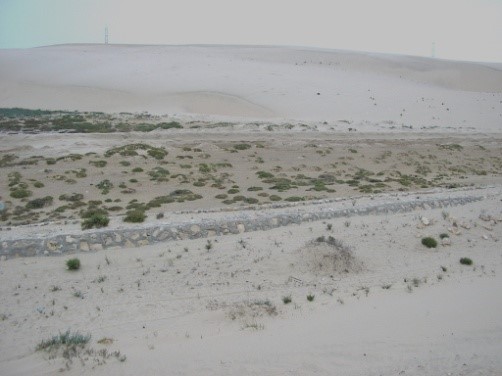Troop movements were often made by night as thousands of hooves kick up a lot of dust – a dead give-away of your position. In addition, the days were too hot in the desert to do anything but try to survive. Some of the troops had travelled two nights, only to arrive in El Arish to the news that Lieutenant General Philip Chetwode, now commanding the advancing Desert Column, was ordering them to set off that night for Magdhaba. This inland Turkish outpost was a threat and needed to be cleared. Time was of the essence to keep the advantage of surprise.
 The weary troops saw the lights of town at 3.50 am on December 23, 1916. The 3rd Light Horse Brigade, the New Zealand Mounted Rifles, the Camel Corps and Australian planes attacked with fierce resistance from the Turks who found themselves surrounded. They had not expected to be confronted at that point but they had water and they had fortifications. A fierce bayonet fight erupted and about 1300 prisoners were taken. By 4.30 pm it was all over and the ANZACs had once again cemented their reputation and amazed their commander. General Chetwode commented that they had done with bayonets what he had never known cavalry (with swords) to achieve1. The toll was 22 dead and 121 wounded. Significant in this battle were the 10th Light Horse from Western Australia and the New Zealanders.
The weary troops saw the lights of town at 3.50 am on December 23, 1916. The 3rd Light Horse Brigade, the New Zealand Mounted Rifles, the Camel Corps and Australian planes attacked with fierce resistance from the Turks who found themselves surrounded. They had not expected to be confronted at that point but they had water and they had fortifications. A fierce bayonet fight erupted and about 1300 prisoners were taken. By 4.30 pm it was all over and the ANZACs had once again cemented their reputation and amazed their commander. General Chetwode commented that they had done with bayonets what he had never known cavalry (with swords) to achieve1. The toll was 22 dead and 121 wounded. Significant in this battle were the 10th Light Horse from Western Australia and the New Zealanders.
Brigadier Charles Frederick Cox from Pennant Hills NSW, commanding the 1st Light Horse Brigade, was awarded the Military Cross for his efforts in charging through a redoubt (temporary fortification) to take the town, despite the fact that he defied orders from General Chauvel to retreat, as he could see his opportunity and the tide turning for them. He reputedly told the orderly to take the message away and show it to him for the first time later!
Unfortunately, there was insufficient water for man and beast in the captured wells and after sleepless nights and fighting all day, the soldiers and horses had to trudge yet another night 45 km back to El Arish with only a can of water. Many fell asleep in the saddle, while others were hallucinating. Even General Chauvel himself took off chasing an imaginary fox.
On January 9, 1917 the Turkish garrison 48 km away at Rafa on the border of Ottoman-controlled Palestine was captured. The entire Sinai Peninsula was now under British control.
Endnotes:
1. Idriess, I., The Desert Column, The Discovery Press, 1932, 165
Picture:
1. Sinai sands – Jill Curry

